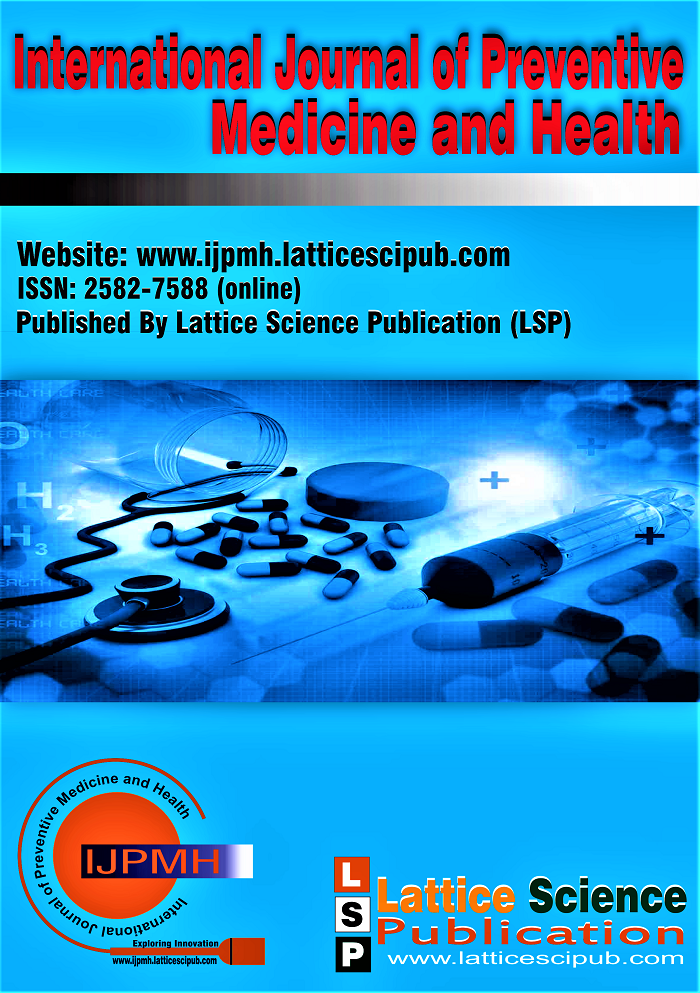Proposed a Framework for Depression Monitoring System by Detecting the Facial Expression using Soft Computing Algorithm
Main Article Content
Abstract
Healthcare Informatics plays a very important role for manipulating data. In the healthcare discoveries, pattern recognition is important for the prediction of depression, aggression, pain and severe disease diagnostics. In [16][5], the real innovation that has affected and organized human services is cloud computing, which empowers whenever anyplace access to the information put away in a cloud. The mobile devices are continuously observing patients that move around a networked healthcare environment. In traditional healthcare diagnostic system, we depend upon expensive tests and machineries which increase the expenditure of healthcare. It is dire need to reduce the aggregate cost of regular or usual diagnostics incorporates high cost of hospitalization. These expenses can be limited or disposed of with the assistance of remote patient monitoring gadget, a healthcare IoT product. Remote monitoring of person’s health gadget includes the observing of a person from an alternate area. This dispenses the requirement for driving to clinic and to being hospitalized for less severe circumstances. This research will explore the depression monitoring system by detecting the facial expression using suitable soft computing algorithm. We may use different algorithms such as CNN and Multilayer Perceptron to get the best result. On the basis of classification it detects the class of disease. For this purpose, the primary dataset from various facial expressions of a patient will be collected, filtered and apply to classification algorithm to train the model.
Downloads
Article Details

This work is licensed under a Creative Commons Attribution-NonCommercial-NoDerivatives 4.0 International License.
How to Cite
References
Dr. D. Venkataraman, N. S. Parameswaran, (2018), “Extraction of Facial Features for Depression Detection among Students”, International Journal of Pure and Applied Mathematics, Volume 118 No. 7 2018, 455-463 ISSN: 1311-8080 (printed version); ISSN: 1314-3395 (on-line version).
P. Raut, P. Kalbhor, H. Hirani, L. Raheja and Prof. P. Y. Pawar, (2018), “Depression Detection using BDI, Speech Recognition and Facial Recognition”, International Journal for Research in Applied Science Engineering Technology (IJRASET) ISSN: 2321-9653; IC Value: 45.98; SJ Impact Factor: 6.887 Volume 6 Issue IV.
A. Jan, H. Meng, Y. F. Binti, A. Gaus and F. Zhang, (2018), “Artificial IntelligentSystemforAutomaticDepressionLevelAnalysisthroughVisual and Vocal Expressions”, IEEE Transactions on Cognitive and Developmental Systems, Vol. 10, No. 3.
P. B. Kulkarni, M. M. Patil, (2018), “Clinical Depression Detection in Adolescent by Face”, International Conference on Smart City and Emerging Technology (ICSCET).
T. Muhammed, R. Mehmood, A. Albeshri and I. Katibi, (2018), “UbeHealth: A Personalized Ubiquitous Cloud and Edge-Enabled Networked Healthcare System for Smart Cities”, Department of Computer Science, King Abdulaziz University, Jeddah 21589, Saudi Arabia 2 High Performance Computing Center, King Abdulaziz University, Jeddah 21589, Saudi Arabia, under Grant G-661-611-38.
S. Dham, A. Sharma and A. Dhall, (2017), “Depression Scale Recognition from Audio, Visual and Text Analysis”, Department of Computer Science and Engineering, Indian Institute of Technology (IIT) Ropar, India. arXiv:1709.05865v1 [cs.CV].
L. Fiorini, F. Cavallo, P. Dario, A. Eavis and P. C. Solly, (May 2017), “Unsupervised Machine Learning for Developing Personalised Behaviour Models Using Activity Data”.
C. Sharma and Dr. Sunanda, (2017), “Survey on Smart Healthcare: An Application of IoT”.
S. Baker, W. Xiang and I. Atkinson, (Nov. 2017), “Internet of Things for Smart Healthcare: Technologies, Challenges, and Opportunities”, IEEE.
A. Pampouchidou, O. Simantiraki, C. - M. Vazakopoulou, C. Chatzaki, M. Pediaditis, A. Maridaki, K. Marias, P. Simos, F. Yang, F. Meriaudeau and M. Tsiknakis, (2017), “Facial Geometry and Speech Analysis for Depression Detection”, 39th Annual International Conference of the IEEE Engineering in Medicine and Biology Society (EMBC). DOI: 10.1109/EMBC.2017.8037103.
P. B. Kulkarni, M. M. Patil and V. M. Wadhai, (2017), “Review On Clinical Depression Detection Using Face And Upper Body Part”, International Journal of Industrial Electronics and Electrical Engineering, ISSN: 2393-2835 Volume-5, Issue-6.
O. M. Alabdani, A. A. Aldahash and L. Y. AlKhalil, (2016), “A Framework for Depression Dataset to Build Automatic Diagnoses in Clinically Depressed Saudi Patients”, SAI Computing Conference 2016, July 13-15,London, UK.
J. S. Jeong, O. Han and Y. Y. You, (2016), “A Design Characteristics of Smart Healthcare System as the IoT Application”, Department of Knowledge Service and Consulting, Hansung University, Seoul, 02876, Korea, Indian Journal of Science and Technology.
K. Kantharia, G. I. Prajapati, (2015), “Facial Behavior Recognition using Soft Computing Techniques: A Survey”, IEEE, Fifth International Conference on Advanced Computing Communication Technologies, DOI: 10.1109/ACCT.2015.132.
Bengio, Yoshua; LeCun, Yann; Hinton, Geoffrey (2015). ”Deep Learning”. Nature. 521 (7553): 436–444. Bibcode:2015Natur.521..436L. doi:10.1038/nature14539. PMID 26017442.
A.Alkandari, M. Alnasheet andI. F. T.Alshekhly, (2012), “SmartCities: Survey”, Computer Science Department, KICT, International Islamic University of Malasia Higher Institute of Telecommunication and Navigation, PAAET, Kuwait. Journal of Advanced Computer Science and Technology Research, Vol. 2 No. 2, 79-90, ISSN: 2231-8852.
J. F. Cohn, T. S. Kruez, I. Matthews, Y. Yang, M. H. Nguyen, M. T. Padilla, F. Zhou and F. D. L. Torre, (2009), “Detecting Depression from Facial Actions and Vocal Prosody”, IEEE, 3rd International Conference on Affective Computing and Intelligent Interaction and Workshops. DOI: 10.1109/ACII.2009.5349358.
MA Boston, (2007), “Normal vs. Abnormal Behavior: A Continuum. In: First Responder’s Guide to Abnormal Psychology”, Springer.
R. Kurt, R. Hillary, Bogner, B. Joseph, Straton,Y. Allen, Tien and J. G. Joseph, (Feb 2004), “Computer-assisted assessment of depression and function in older primary care patients”, Computer Methods and Programs in Biomedicine Volume 73, Issue 2,Pages 165-171, Elsevier. https://doi.org/10.1016/S0169-2607(03)00026-9.
G. Gupta, (2011), “Algorithm for Image Processing Using Improved Median Filter and Comparison of Mean, Median and Improved Median Filter”, International Journal of Soft Comp





